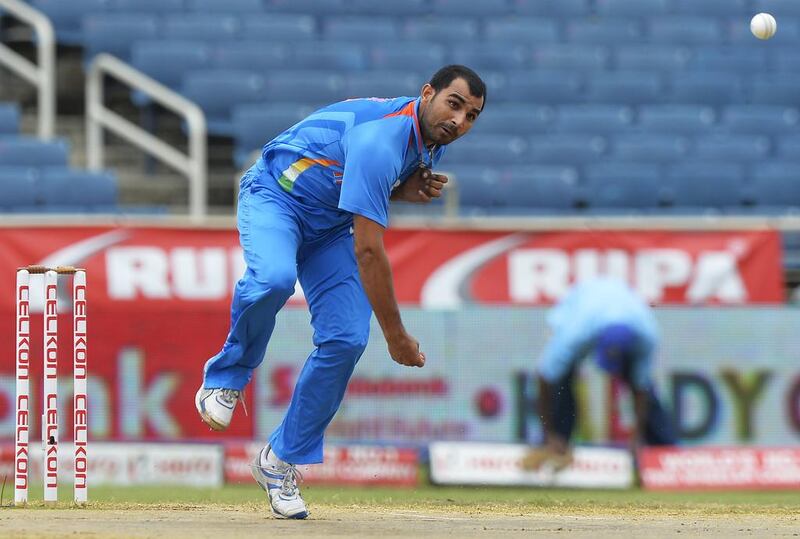As the crow flies, it is approximately 1,300 kilometres from Eden Gardens in Kolkata to the town of Sahaspur in western Uttar Pradesh.
As far as cricket is concerned, though, the two places may as well be on different planets. Eden Gardens is Indian cricket’s most hallowed, and controversial, venue – scene of its greatest Test triumph and some of its most lamented defeats.
Sahaspur does not even have a proper turf pitch. Most houses are lucky to get a couple of hours of electricity every day.
The state has given India international cricketers such as Mohammad Kaif, Praveen Kumar, Suresh Raina and Bhuvneshwar Kumar in recent years, but talent identification remains quite haphazard, more so when it comes to the one sport that most kids want to play.
At most camps to cherry pick the best, you are lucky if you get three or four balls to bowl, and as many to hit.
In such a scenario, Tousif Ali, Mohammed Shami’s father, did not feel that staying at home would give his son the best chance of success.
Tousif, who had bowled quick in his youth, saw qualities in Shami that made him take a chance and send him to Kolkata, the city of vast maidans and many clubs, where an eye-catching talent can find a place to play.
Shami was 16 at the time, no age to be on your own in a big city far from home. But unlike many others, he did not give up and head back. He stayed on, worked his way through the club system and the Bengal Under 22 side, until he made his Ranji Trophy debut three years ago.
That match against Assam gave several clues as to what lay in store. At the time, Bengal’s attack was led by Ranadeb Bose, who had toured England with the Indian side in 2007, and Ashok Dinda, who has been on the periphery of the national team for a while.
But WV Raman, the former India opener who coached Bengal at the time, had little hesitation in putting his faith in the kid who wanted to bowl fast.
“His first game, he played with what we thought was a viral fever,” he told Wisden India. “It was later diagnosed as dengue. But even with a high temperature, he ran in hard and took wickets. That showed his spirit.”
During their time together, Raman and Shami worked on many things, most notable his stride pattern and the lines to bowl in Indian conditions that rarely indulge pace bowlers.
By the 2012/13 season, Raman’s last in charge of Bengal, Shami was making a strong case for the national cap, with 28 Ranji wickets at 21.35. When picked for the final ODI against Pakistan last January, he responded with a wicket and four maiden overs as India edged a low-scoring game.
But for James Faulkner’s stunning 30-run pillaging of Ishant Sharma in Mohali last month, Shami probably would not have played in Kolkata in the first Test against West Indies.
The think tank appears to have an irrational faith in Ishant’s ability, despite a record that speaks of 144 wickets at 38 from 51 Tests. Shami would have known that he had to impress to have any chance of making the squad for South Africa.
He did more than impress, taking nine for 118, the best performance on debut by an India pace bowler. Forget the numbers though. What excited both fans and experts alike was the control he showed, and the mastery of reverse swing. Six of the nine were bowled, and one leg before wicket. He bowled long spells in the heat, and the average pace never dropped below 135km/hr.
Though not as quick as Waqar Younis in his prime, the comparisons were inevitable, with Sourav Ganguly, the former India captain, one of the first to mention it.
But while the shape was quite Waqar-like, the method was not. At his most devastating, Waqar bowled a full length, endangering batsmen’s toes as much as the stumps.
Shami did not pitch it up as much. For most of his wickets, he hit a good length outside off stump, and the ball then moved off the seam to hit timber. The West Indies batsmen, who collapsed miserably in both innings, did little to negate him in terms of standing well outside the crease or reducing the backlift.
The mood is still one of cautious optimism though. The list of seamers to have impressed on debut in the past decade includes Munaf Patel, S Sreesanth, RP Singh and Abhimanyu Mithun. One, Sreesanth, has already been banned from the game. The other three are not even contenders for an India cap.
It is up to Shami who has already had an incredible journey, to prove that he is in it for the long haul.
sports@thenational.ae





